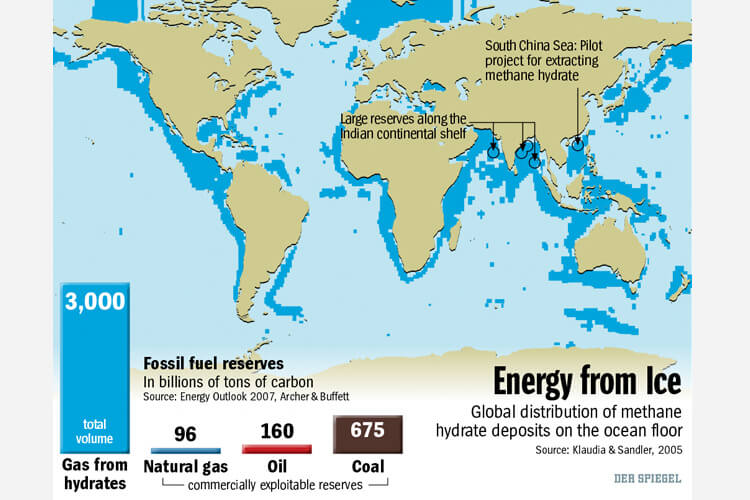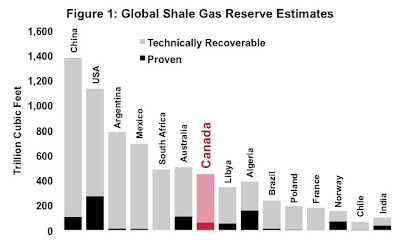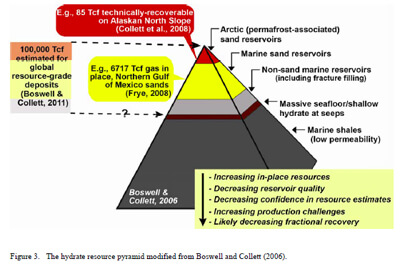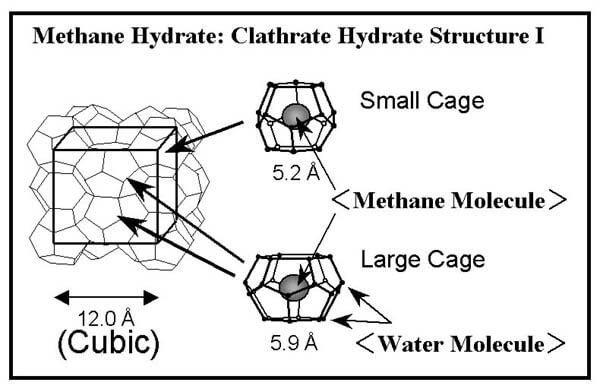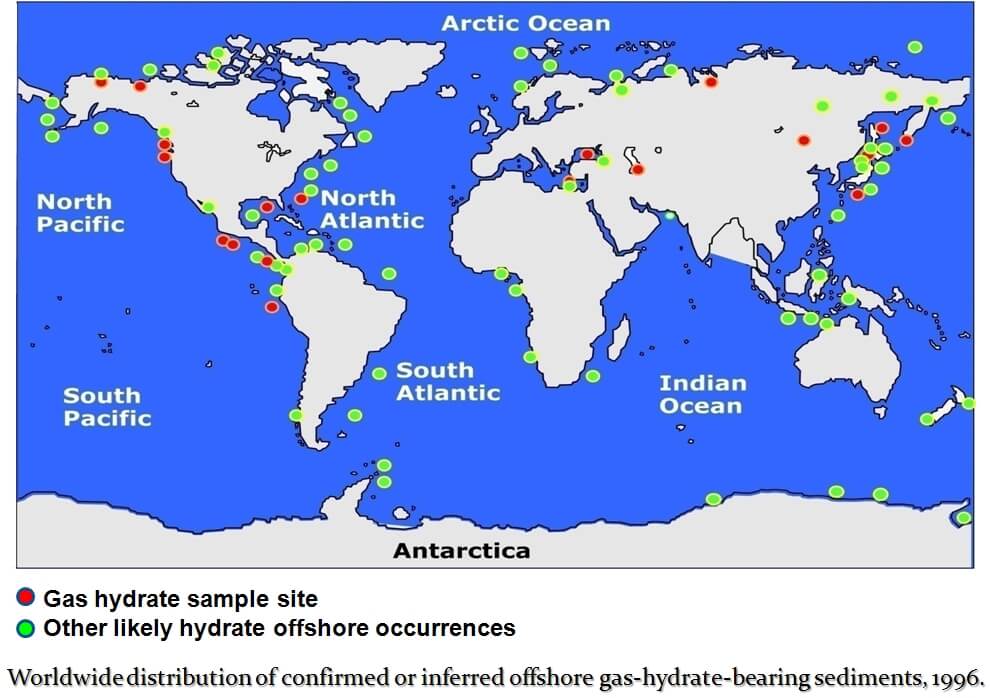The search for additional sources of energy continues. Emerson’s Alan Novak, director of the Alternative Energy as well as the Mining and Metals industries looks at ice gas as another energy source in today’s guest post.
Ice Gas, formally known as methane hydrates, made the news recently as highlighted in this March 12 UK Telegraph article, Japan cracks seabed ‘ice gas’ in dramatic leap for global energy. Japan’s state-owned oil and gas company JOGMEC announced that it had successfully extracted natural gas from methane hydrate deposits off the Japanese coast in the first sea-based demonstration of this technology. While still a few years from commercial production, it is believed the coastal deposits contain enough natural gas to supply Japan’s entire demand for many years and would help to offset some of the large quantities of liquefied natural gas (LNG) it currently imports.Source: Western Oregon University, Gas Hydrates, https://www.wou.edu/las/physci
/Energy/Gas_Hydrates.htmlWhy is this announcement so important?
Because while methane hydrates are difficult to extract they represent the largest global energy reserve available, with some estimates indicating the total carbon available in hydrates is more than two times the total in all other fossil energy sources combined.
Source: Western Oregon University, Gas Hydrates, https://www.wou.edu/las/physci
/Energy/Gas_Hydrates.html
Putting this in perspective, total global shale gas reserves are approximately 6,600 trillion cubic feet (TCF):Source: Urbanomics blog, Global shale gas reserves https://gulzar05.blogspot.com/2011/04
/global-shale-gas-reserves.html
While methane hydrate reserves are estimated to be as much as 100,000 TCF.Source: MIT, Methane Hydrates and the Future of Natural Gas supplementary Paper 4, https://mitei.mit.edu/system/files
/Supplementary_Paper_SP_2_4_Hydrates.pdf
Methane hydrate is literally natural gas trapped in an “ice cage”…Source: Environmental and Energy Resources Center (ERC), Kitami Institute of Technology, https://www-ner.office.kitami-it.ac.jp
/main-e.html
…and exists at very specific temperature and pressure conditions which are largely found in the shallow ocean near the continental shelf:Source: The Journal of Undergraduate Biological Studies, Methane Hydrate, Natural Deposits, https://www.learn.ppdictionary.com/methane_hydrates
/natural_deposits.htm
Commercial scale production of this resource is still years away but the recent announcement by JOGMEC is a significant step along the development path. Will the current natural gas “Shale Gale” be followed by an “Ice Age”? Only time will tell.



